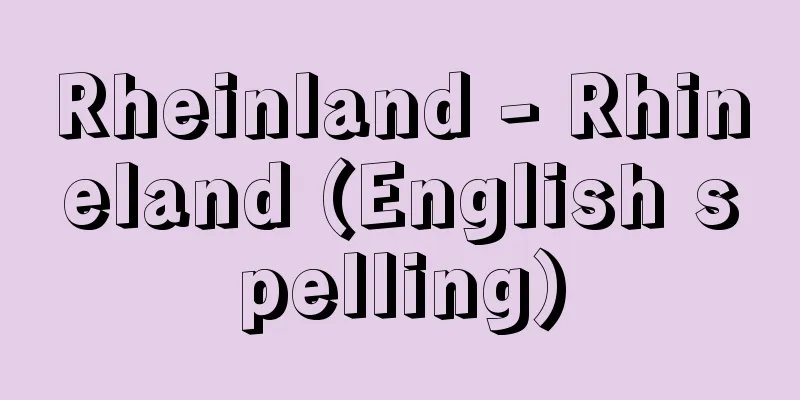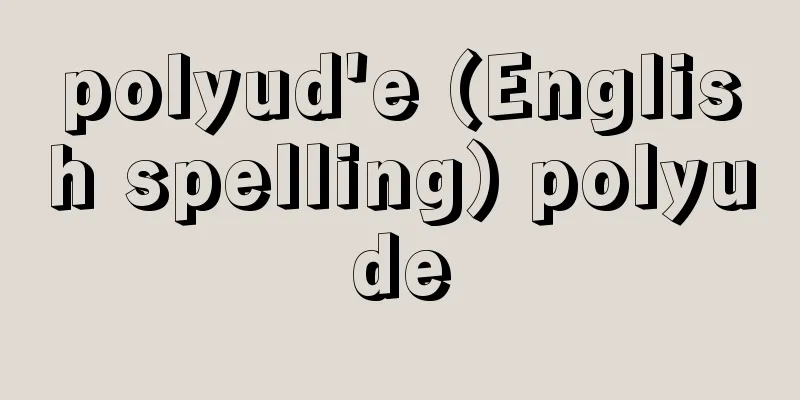Rheinland - Rhineland (English spelling)

|
In a broad sense, it refers to the area on both sides of the Rhine River in Germany, and in a narrow sense, the former Prussian Rhineland. It came under Roman rule from the 1st century BC, and Germanic Franks immigrated there from the 3rd century AD, and after the fall of the Western Roman Empire, it became part of the Frankish Kingdom. When the Frankish Kingdom split into East and West in the 9th century, it belonged to East Frank and strengthened its German elements. From the 14th century onwards, it was divided into many principalities, among which were powerful religious princes such as the archbishops of Cologne, Trier, and Mainz. In the early 17th century, Prussia gained territory here, and France also showed territorial ambitions on the left bank of the Rhine, and after the French Revolution, the left bank of the Rhine became French territory under Napoleon. However, in 1815, the Congress of Vienna gave this region to Prussia, and in 1824, the Prussian Rhineland was established. This area saw remarkable development of commerce and industry from early on, and in the 19th century, with the Industrial Revolution, it became the heart of the German economy, centered on the Ruhr region. After World War I, parts of the region were occupied by the Allied forces and designated as demilitarized zones, becoming a point of international conflict. In 1936, Hitler sent troops here and destroyed the Versailles system. After World War II, the region was divided and ruled by France, the United Kingdom, and the United States, and is now part of the German states of North Rhine-Westphalia and Rhineland-Palatinate, respectively. [Kitani Tsutomu] [References] | |Source: Shogakukan Encyclopedia Nipponica About Encyclopedia Nipponica Information | Legend |
|
広義ではドイツのライン川両岸地域、狭義では旧プロイセン領ライン州をさす。紀元前1世紀からローマの支配下に入り、紀元後3世紀以降はゲルマン系のフランク人が移住、西ローマ帝国滅亡後、フランク王国の一部となった。9世紀にフランク王国が東西に分裂すると、東フランクに属し、ドイツ的要素を強めた。14世紀以降、多数の諸侯国に分かれ、そのなかにはケルン、トリール、マインツの大司教など有力な宗教諸侯がいた。17世紀初め、プロイセンがここに領土を得、またフランスもライン左岸への領土的野心を示し、フランス革命後、ナポレオンのもとでライン左岸はフランス領になった。しかし1815年ウィーン会議はこの地域をプロイセンに与え、24年プロイセン領ライン州成立。ここは早くから商工業の発達が目覚ましかったが、19世紀に産業革命とともに、ルール地方を中心にドイツ経済の心臓部となった。第一次世界大戦後、この地域の一部は連合軍によって占領され、また非武装地域に指定されるなど、国際対立の争点となった。1936年ヒトラーはここに軍隊を入れ、ベルサイユ体制を崩壊させた。第二次世界大戦後はフランス、イギリス、アメリカ3国によって分割統治され、現在はドイツのノルトライン・ウェストファーレン州およびラインラント・プファルツ州のそれぞれ一部になっている。 [木谷 勤] [参照項目] | |出典 小学館 日本大百科全書(ニッポニカ)日本大百科全書(ニッポニカ)について 情報 | 凡例 |
<<: Rheinland‐Pfalz (English spelling)
>>: Rhein‐Main‐Donau‐Grossschiffahrtsweg (Rhein‐Main‐Danube Canal)
Recommend
Lichine, D.
...Also, for the first time in history, three dan...
Chewing betel nuts
...But in agricultural cultures, intoxicating foo...
Scaliger, JC (English spelling) ScaligerJC
…Their era was, so to speak, the preparatory peri...
Cesare Lombroso
Italian physician. Renowned as the founder of cri...
The Jerusalem Bible
... Looking beyond the UK and the US, in Germany,...
"Station front housing complex" - Ekimaedanchi
...The perfect pairing between Morishige and the ...
Rhizomys sumatrensis (English spelling) Rhizomyssumatrensis
… [form] Most of them are small, with a body leng...
Old Historical School (English spelling: ältere historische Schule; older historical school)
Among the German historical schools, this school w...
Kamasu - Kamasugo
Please see the page on Samoyed languages. Source:...
Motor function (machine tools) - Sports yesterday
...It was around the middle of the Meiji period t...
Onji (soil) - Onji
…The name comes from the fact that the topsoil is...
Diplopoda
…(6) Paulopoda, the millipedes. (7) Diplopoda, th...
Documentary photography - dokyumentariishashin (English)
Photography, in its own function, is primarily a t...
Dried Salmon - Karasake
〘Noun〙① Salted salmon soaked overnight in cold run...
Square claws - Kakuzume
Kototsume Packed It is a type of rectangular shap...









